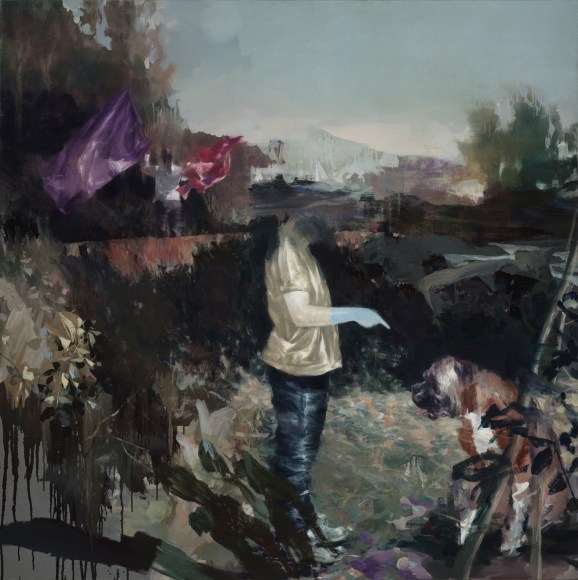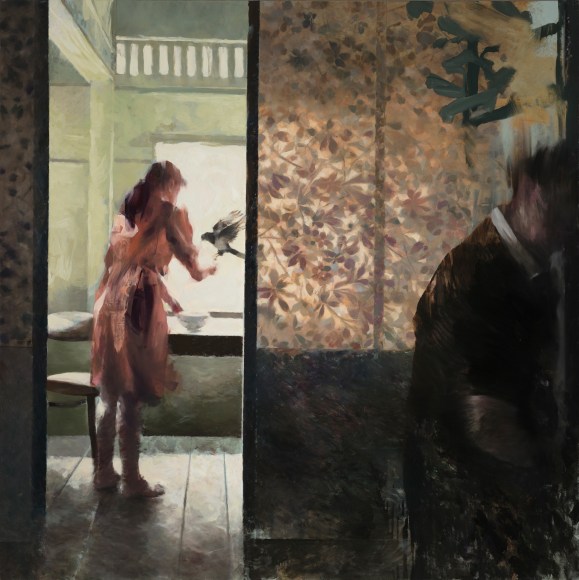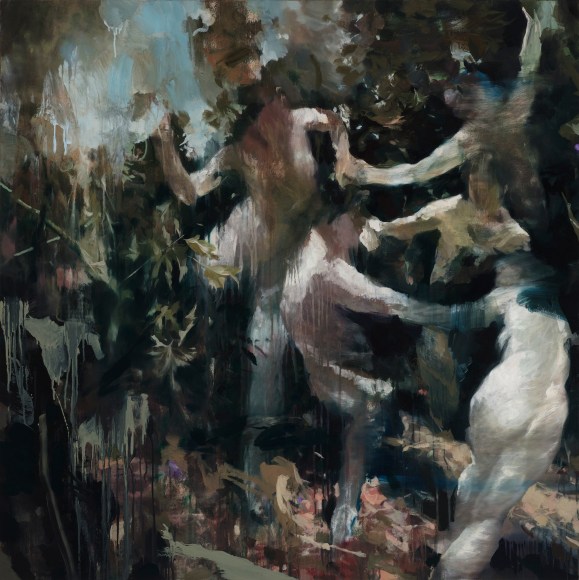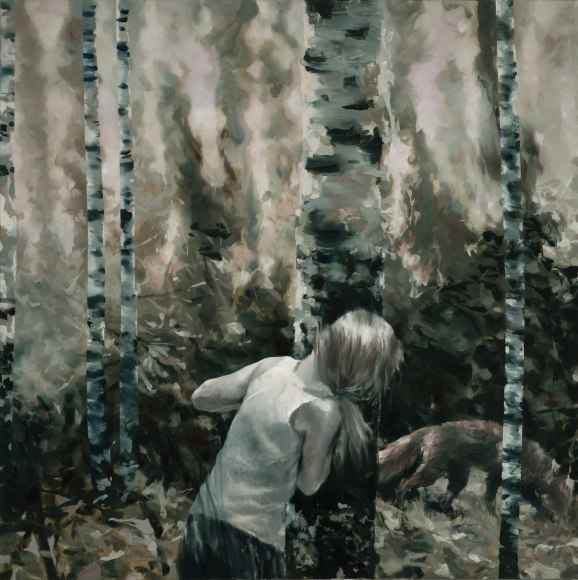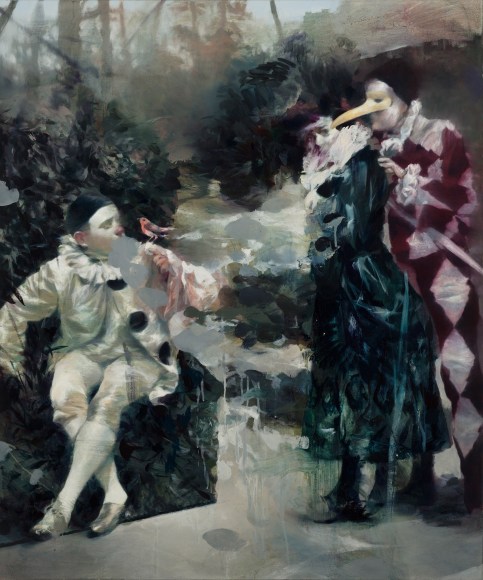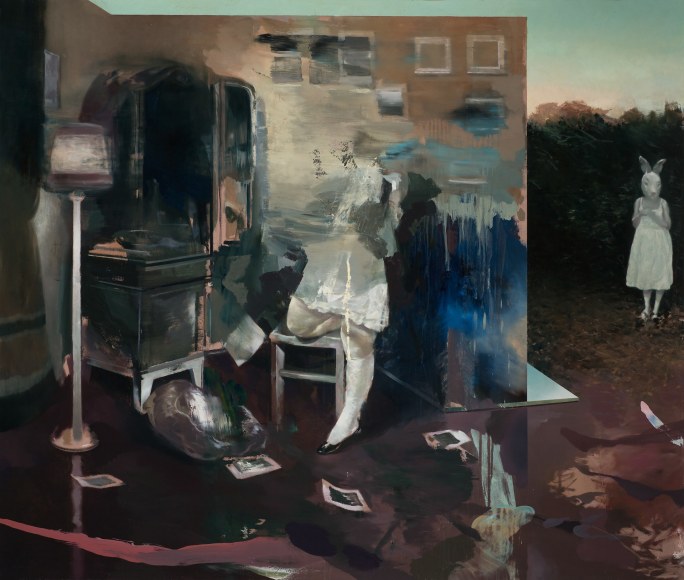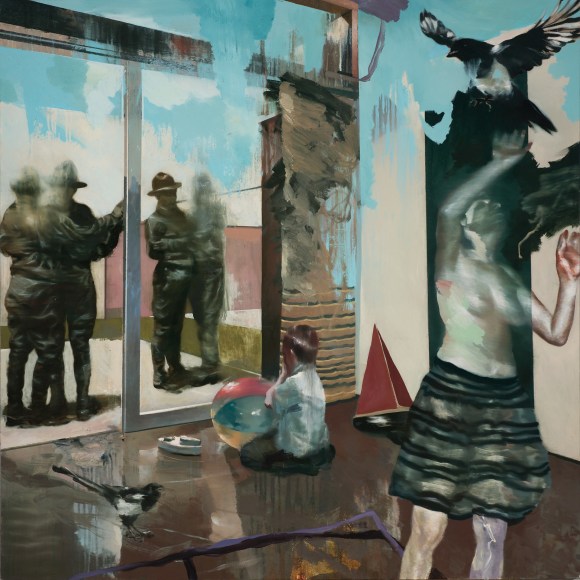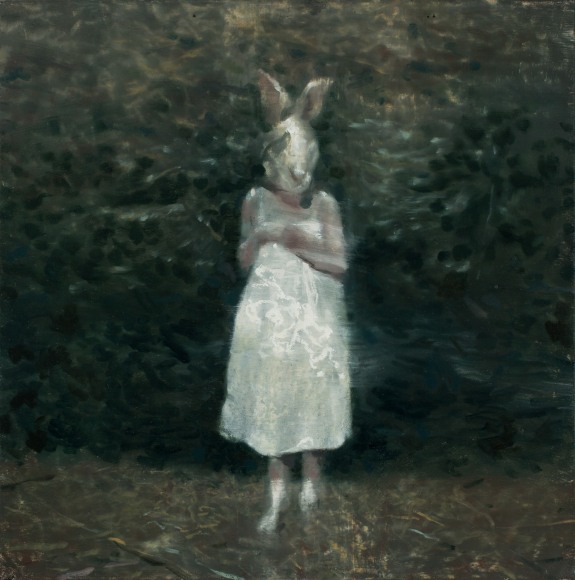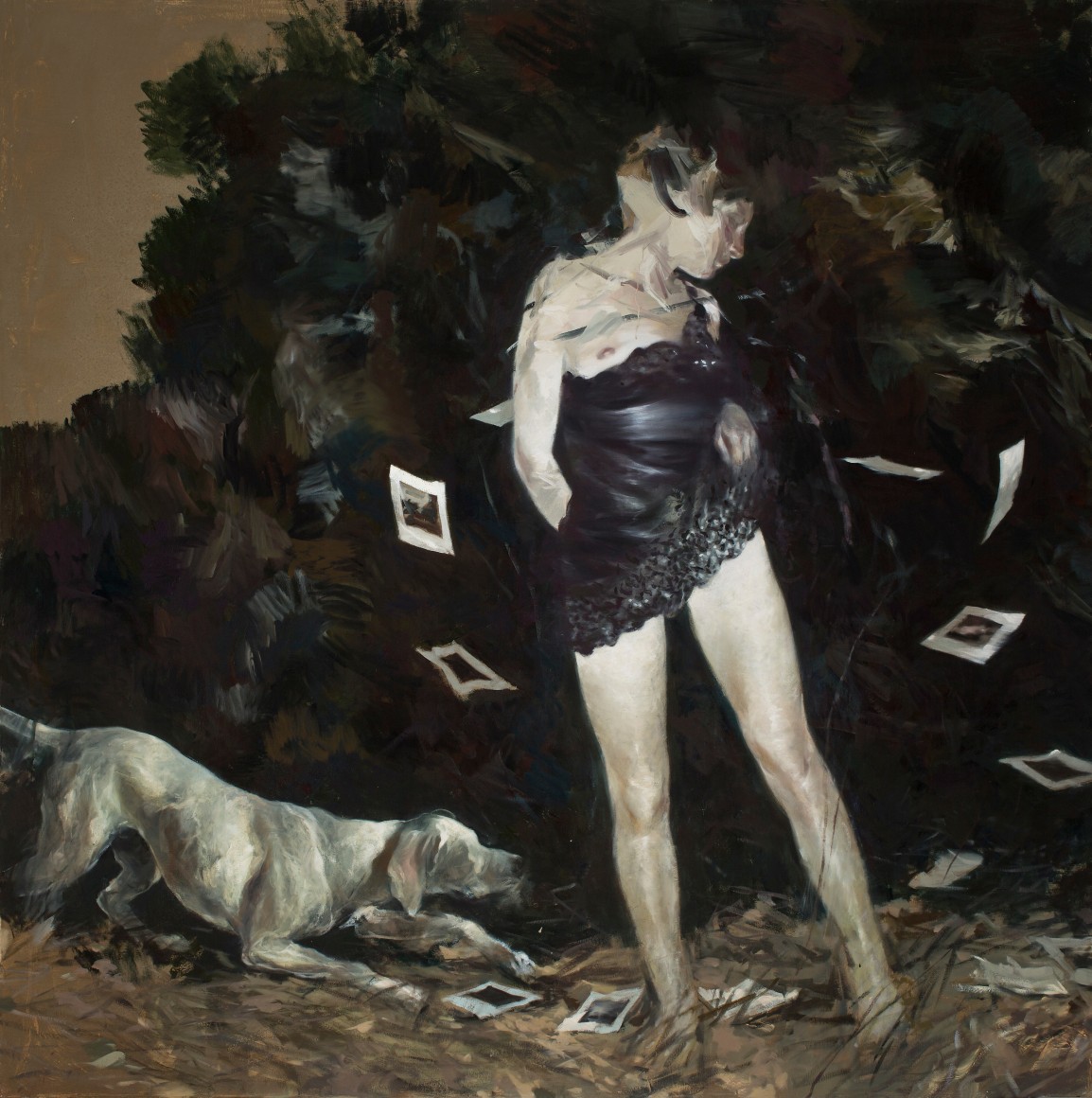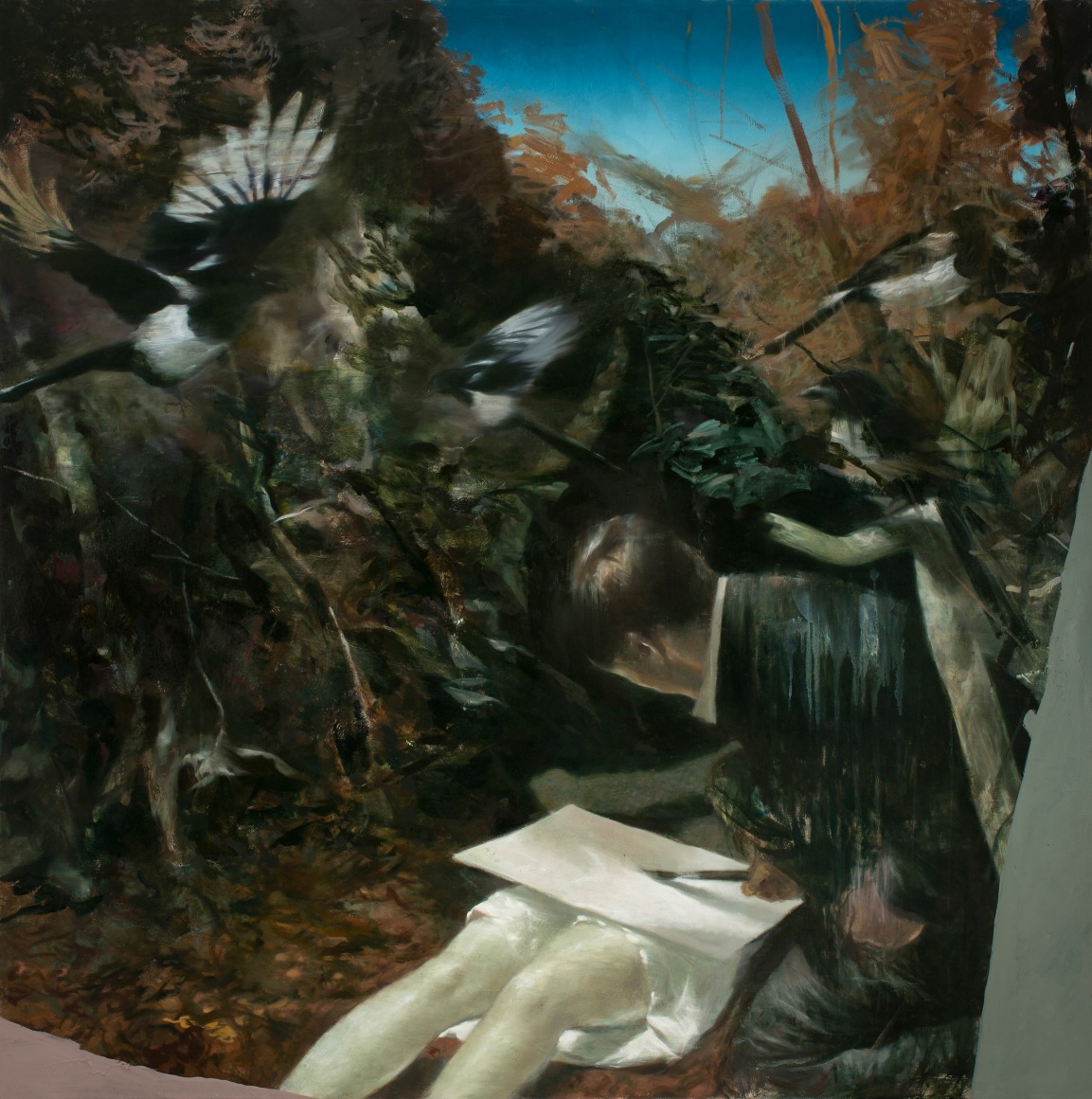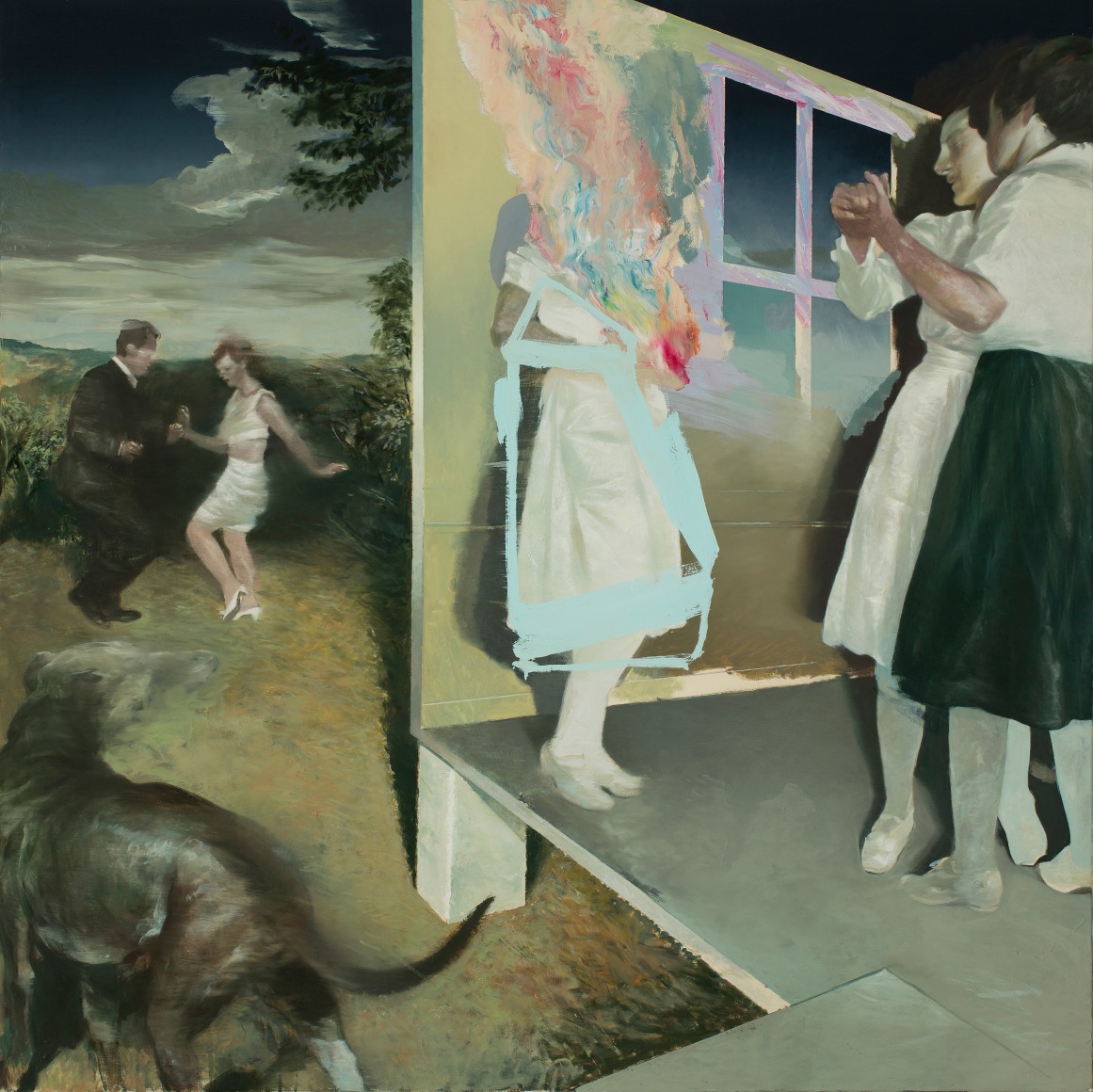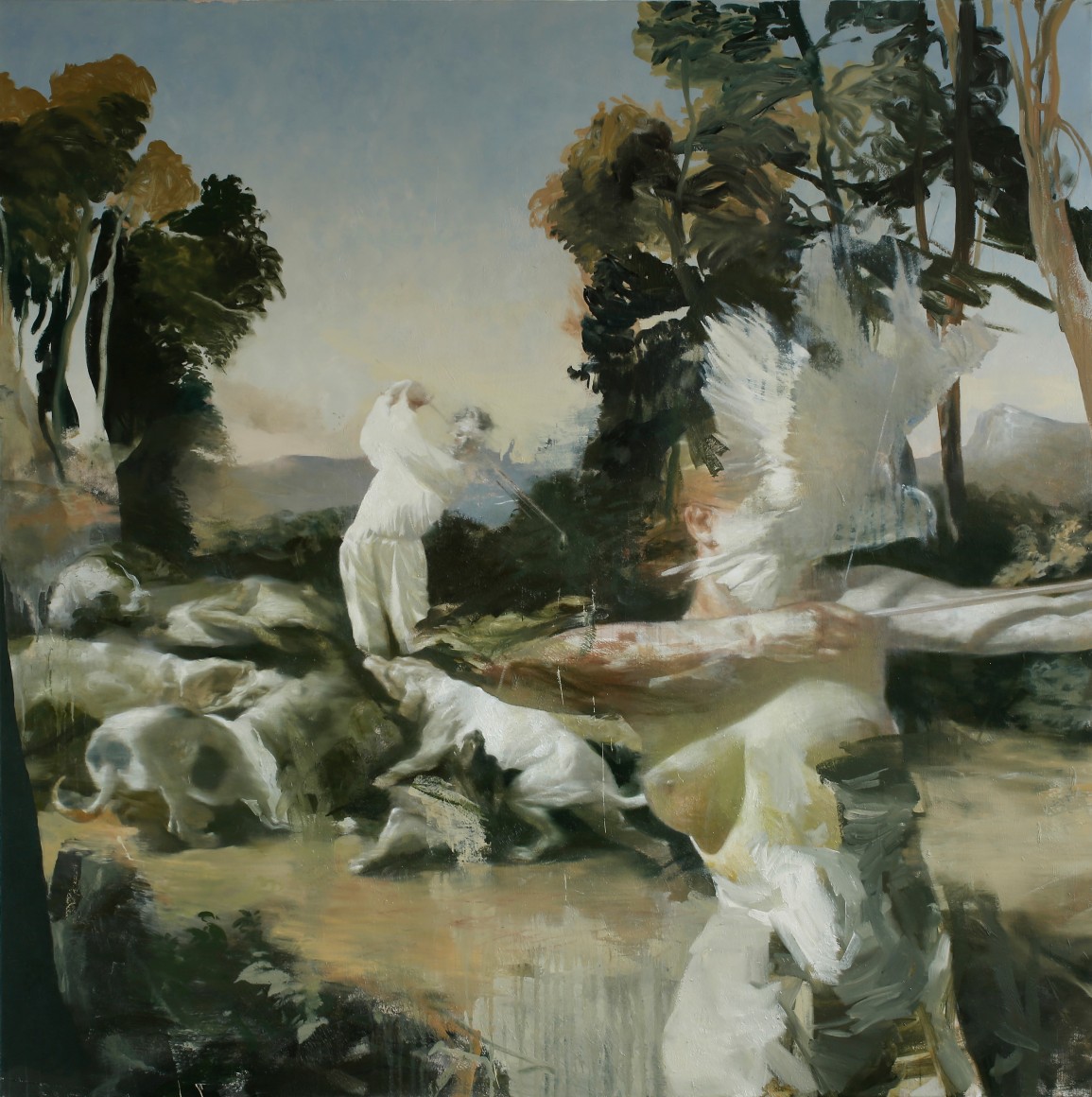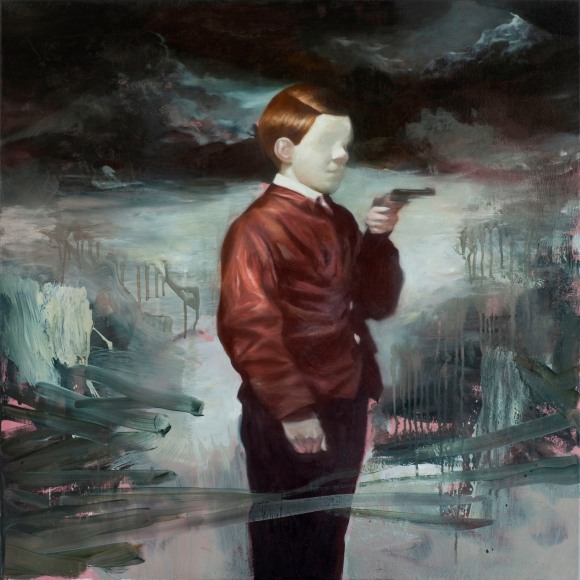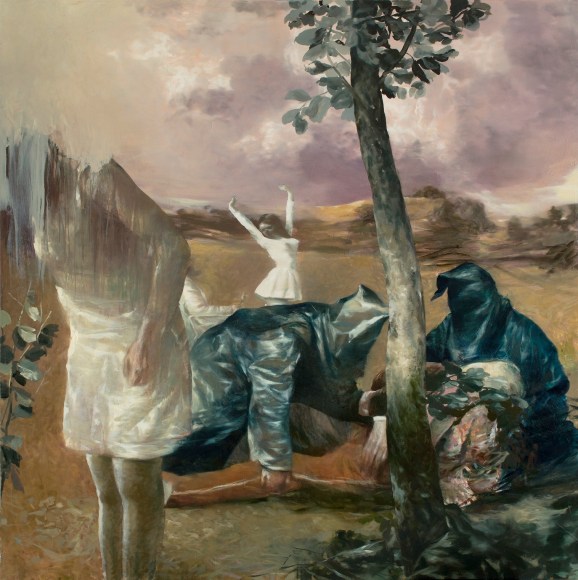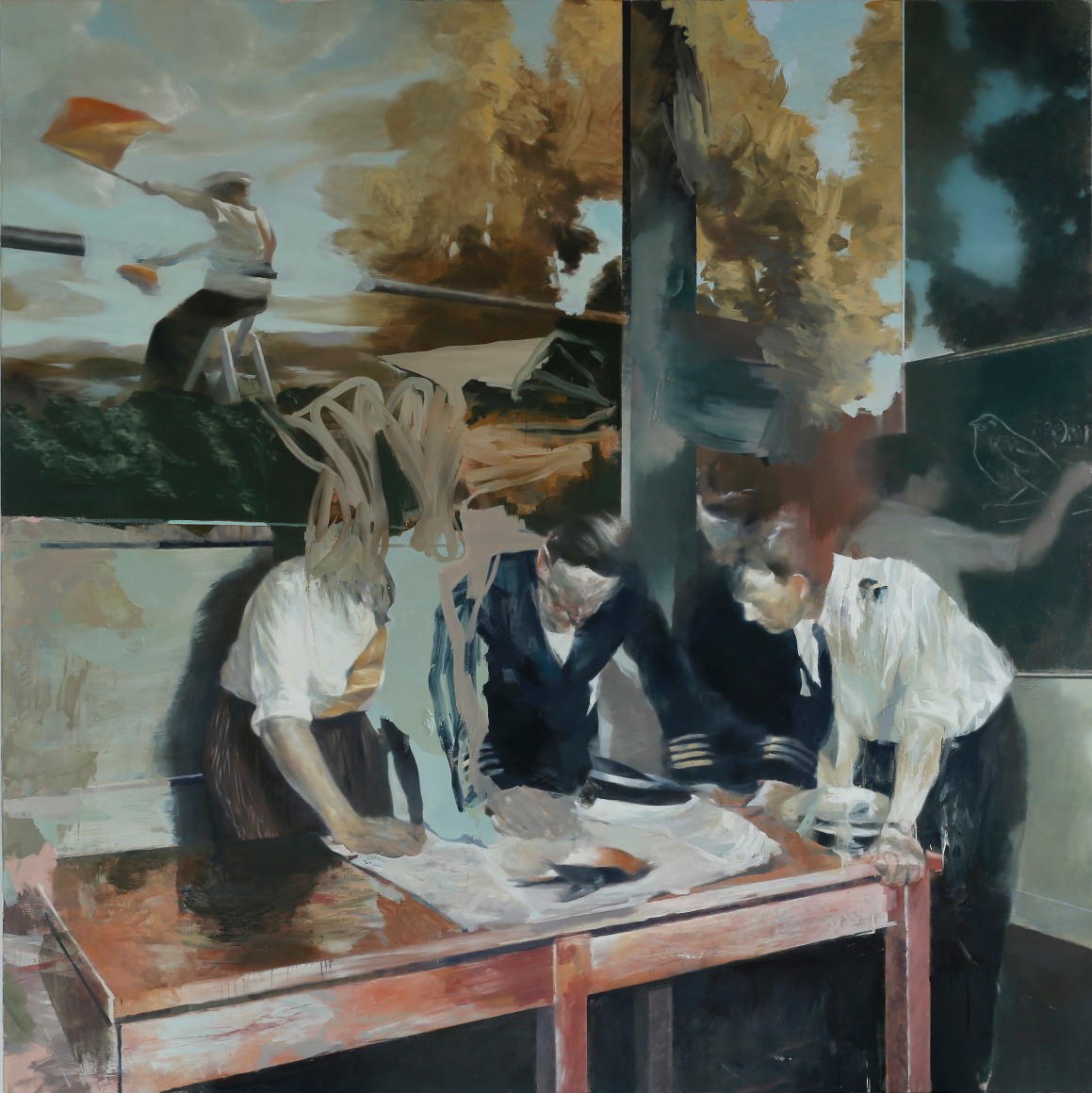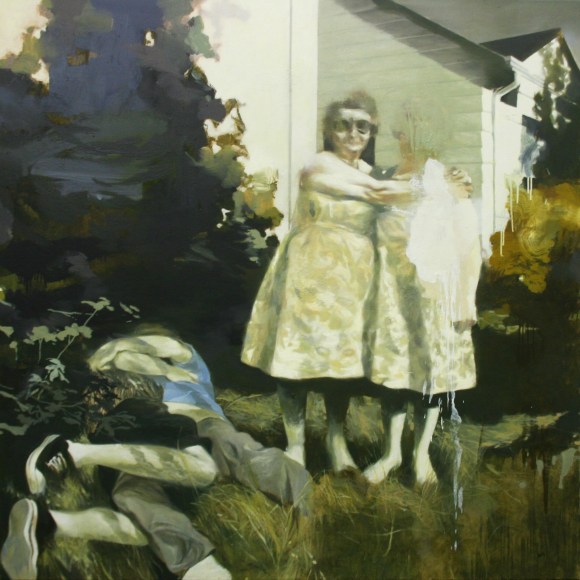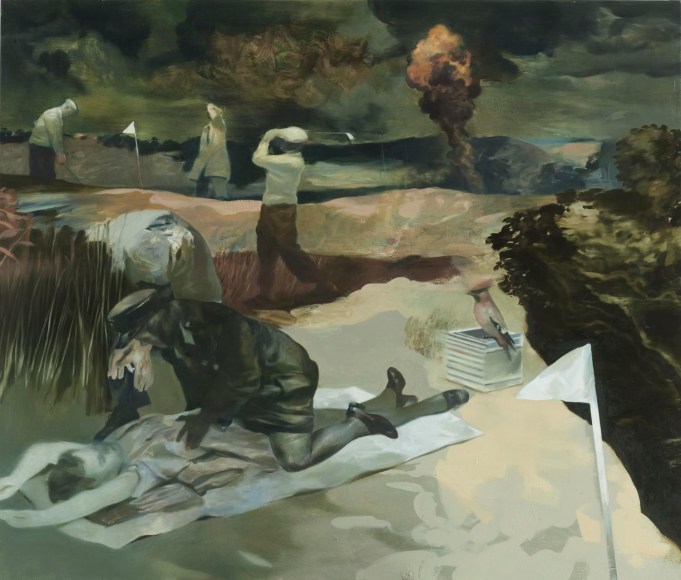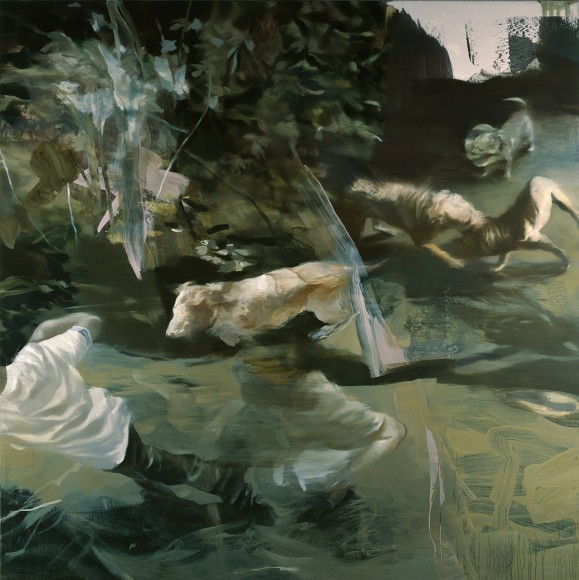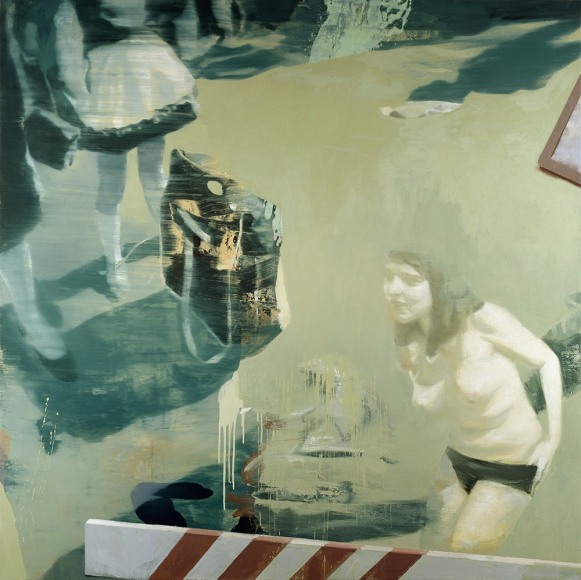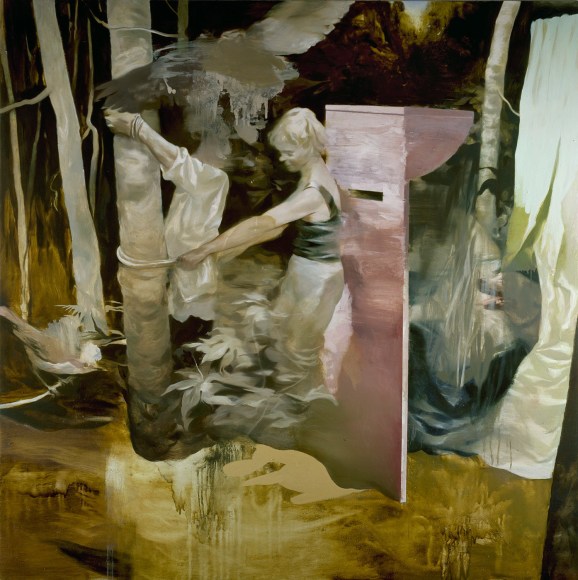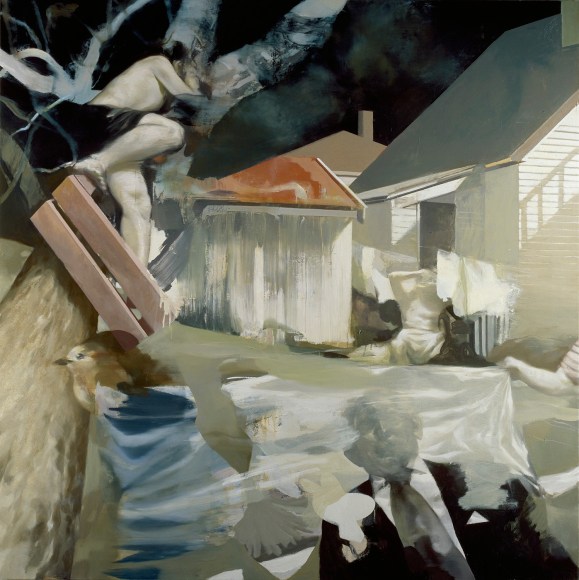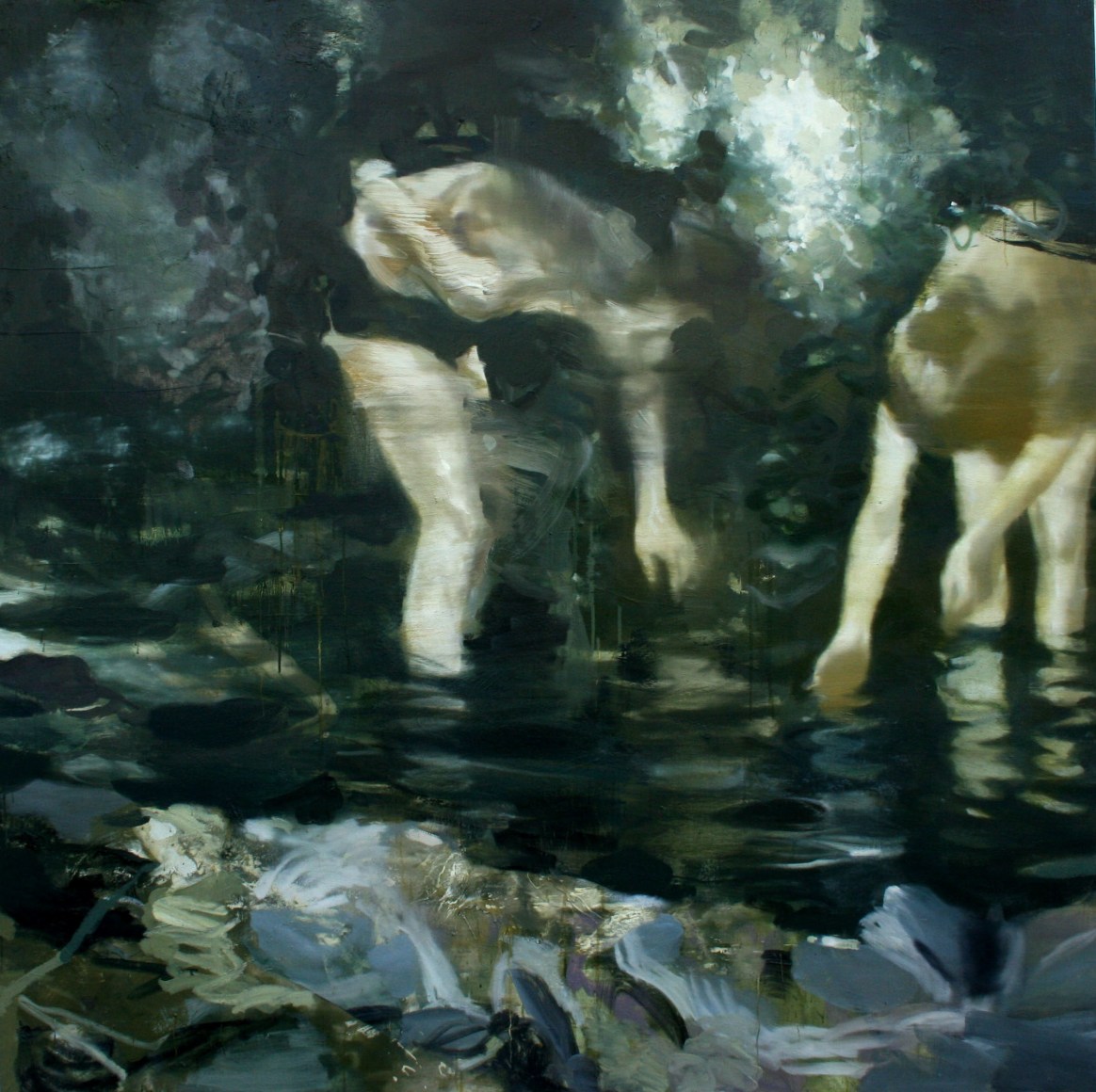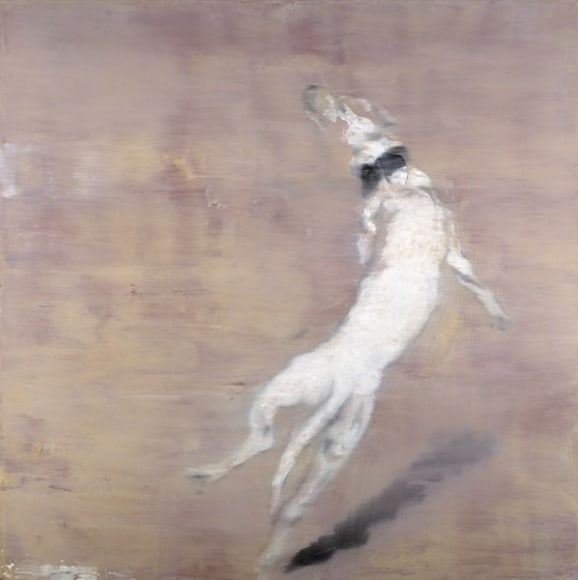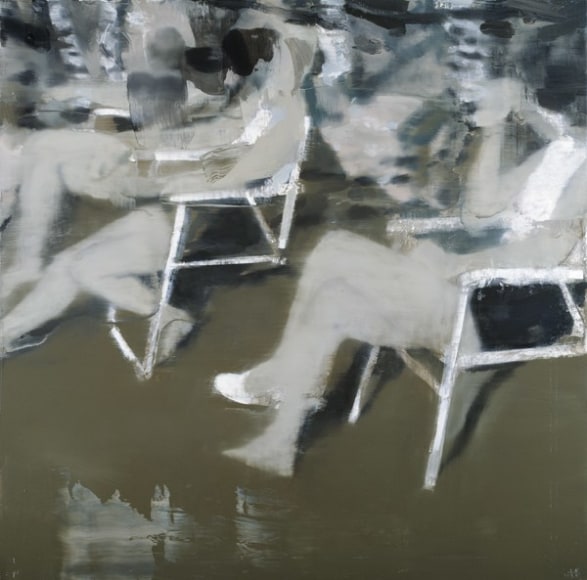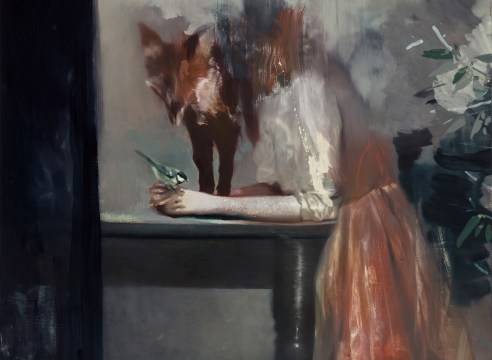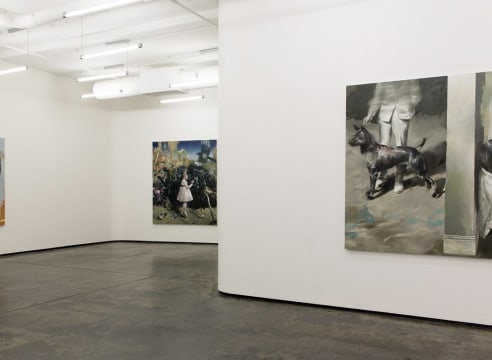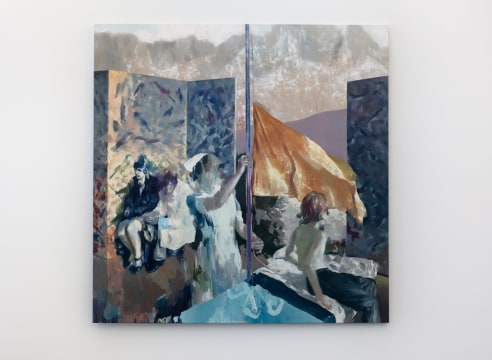
Lars Elling (1966) was educated at the Bergen National Academy of the Arts (1988-92).
Elling is a storyteller. His layers of imagery evoke memories of childhood, with possible disturbance and trauma written between the lines. Family is the repetitive theme in Elling’s works; familiar moments infiltrated by surprising or unpleasant elements. The formalistic aspect of Lars Elling’s paintings is characterized by the erased and the broken. The pure visual expression serves a meaningful function, with story and poetry as strong fundamentals. The paintings can be seen as a burst of memory, a description of a moment. The almost experienced or almost seen is presented in a dreamlike and poetic expression, which can be compared to the poetic expressions in the works of Francis Bacon. Similar to Bacon, Elling's works depict the logic of emotions, illustrating a narrative structure with a beginning, middle, and end, albeit not necessarily in that order.
Elling’s works search in a layered paradox of the intentional/unintentional, though based on a personal pilgrimage into concentrated work and moments of surrender. Lars Elling works with language, but not in the traditional sense. This point can be illustrated by comparing Ellings way of painting to a film by Chantal Ackerman, who is the director of “Toute Une Nuit”. Neither Ackerman nor Elling's works can be decoded using rigorous structuralism; their works are rich in symbolism, often imbued with aspects of melancholy.
The film is one of the simplest visual films ever made, featuring about 50 different people whose actions are primarily limited to embracing each other on a summer night. Still, Ackerman was very precise in writing the scripts of her film, which is surprising, as it is only natural to assume that such a pure visual expression does not require a language. There is a language that can’t be read in a linear way; the language is an emotion or a symbol that only can be expressed through an aesthetic matter.

